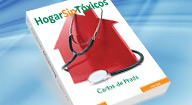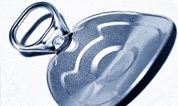Referencias científicas
- EFSA (2010): Scientific Opinion on Bisphenol A: evaluation of a study investigating its neurodevelopmental toxicity, review of recent scientific literature on its toxicity and advice on the Danish risk assessment of Bisphenol A, http://www.efsa.europa.eu/en/efsajournal/doc/1829.pdf
- Ejemplo de ello es la forma en la que la EFSA ignoró la petición de un importante número de científicos internacionales en la primavera de 2010 que solicitaban un control más estricto de la exposición al bisfenol A. European health group supports call for reducing exposure to BPA. PRESS
Commission Directive 2011/8/EU regarding the restriction of use of Bisphenol A in plastic infant feeding bottles, http://eurlex.europa.eu/LexUriServ/LexUriServ.do?uri=OJ:L:2011:02 6:0011:0014:EN:PDF
El 2 de abril de 2011, se publicó el Reglamento de Ejecución (UE) Nº 321/2011 de la Comisión de 1 de abril de 2011, que modificaba el Reglamento (UE) Nº 10/2011 por lo que respecta a la restricción del uso de BPA en biberones de plástico para lactantes, que ratificó los plazos marcados en la Directiva. De modo que desde el día 1 de junio de 2011, no podían comercializarse ni importarse biberones de policarbonato para lactantes que contengan Bisfenol A.- Orden PRE/628/2011, de 22 de marzo, por la que se modifica el Anexo II del Real Decreto 866/2008, de 23 de mayo, por el que se aprueba la lista de sustancias permitidas para la fabricación de materiales y objetos plásticos destinados a entrar en contacto con los alimentos y se regulan determinadas condiciones de ensayo. BOLETÍN OFICIAL DEL ESTADO. Núm. 72 Viernes 25 de marzo de 2011 Sec. I. Pág. 31866 http://www.boe.es/boe/dias/2011/03/25/pdfs/BOE-A-2011-5399.pdf
- Press release of the Danish Ministry of Food, Fisheries and Agriculture: Danish ban on bisphenol A in materials in contact with food for children aged 0-3, 26.03.2010, http://www.fvm.dk/News_display.aspx?ID=18488&PID=169628&year=’+thisYear+’&NewsID=6014
- Bundesgesetzblatt Nr. BGBl. II Nr. 327/2011 Teil II. Datum der Kundmachung 06.10.2011 http://www.ris.bka.gv.at/Dokument.wxe?Abfrage=BgblAuth&Dokumentnummer=BGB LA_2011_II_327
- Belgium aims to ban BPA in food containers for young children Wednesday, 18 January 2012 http://www.chemsec.org/news/news-2012/867-belgium-aims-to-ban-bpa-in-foo…
- Norwegian Pollution Control Authority. (2007). Impact assessment of a proposal for prohibition on certain hazardous substances in consumer pro¬ducts.
- ANSES. Informe del Colectivo de Expertos. Solicitud de informes números: 2009-SA-0331 y 2010-0197-SA: Efectos sobre la salud del BPA. Septiembre 2011
Ikezuki Y et al (2002) Determinatios of bisphenol A concentrations in human biological fluids reveals significant early prenatal exposure. Human Reprod; 17: 2839-2841
Vom Saal FS. Chapel Hill bisphenol A expert panel consensus statement: integration of mechanisms, effects in animals and potential to impact human health at current levels of exposure. Reprod. Toxicol.. 2007;24(2):131–8
Tracey J. Woodruff, Ami R. Zota, and Jackie M. Schwartz. Environmental Chemicals in Pregnant Women in the United States: NHANES 2003–2004. Environ Health Perspect. 2011 June; 119(6): 878–885.- Schönfelder, G, W Wittfoht, H Hopp, CE Talsness, M Paul and I Chahoud. 2002. Parent Bisphenol A Accumulation in the Human Maternal-Fetal-Placental Unit. Environmental Health Perspectives 110:A703-A707.
- http://www.chemsec.org/news/news-2013/januarymarch/1117-sweden-to-initia…
- En concreto, la EFSA se basó en un nivel supuesto por debajo del cual no se observarían efectos (Non Observed Adverse Effect Level, NOAEL) de 5 mg / kg / día y lo utilizó para calcular la Ingesta Diaria Tolerable (Tolerable Daily Intake, TDI) de bisfenol A.
EFSA advises on safety of bisphenol A and confirms review of opinion in 2012. News Story
1 December 2011 http://www.efsa.europa.eu/en/press/news/111201.htm
Bisphenol A: EFSA launches full re-evaluation focussing on exposure and possible low dose effects.
News Story. 24 April 2012 http://www.efsa.europa.eu/en/press/news/120424.htmChitra KC, Latchoumycandane C, Mathur PP. Induction of oxidative stress by bisphenol A in the epididymal sperm of rats. Toxicology. 2003 Mar 14;185(1-2):119-127
Herath CB, Jin W, Watanabe G, Arai K, Suzuki AK, Taya K. Adverse effects of environmental toxicants, octylphenol and bisphenol A, on male reproductive functions in pubertal rats. Endocrine 2004 Nov;25(2):163-172.Mok-Lin E, Ehrlich S, Williams P., Petrozza J, Wright DL, Calafat AM, Ye X, Hauser R. Urinary bisphenol A concentrations and ovarian response among women undergoing IVF. Int J Andro. 2010 Apr; 33(2):385-393
Fujimoto VY, Kim D, vom Saal FS, Lamb JD, Taylor JA, Bloom MS. Serum unconjugated bisphenol A concentrations in women may adversely influence oocyte quality during in vitro fertilization Fertil Steril. 2011 Apr;95(5):1816-9.- Braniste V, Jouault A, Gaultier E, Polizzi A, Buisson-Brenac C, Leveque M, Martin PG, Theodorou V, Fioramonti J, Houdeau E. Impact of oral bisphenol A at reference doses on intestinal barrier function and sex differences after perinatal exposure in rats., PNAS 2010, 107(1):448-53.
Chitra KC, Latchoumycandane C, Mathur PP. Induction of oxidative stress by bisphenol A in the epididymal sperm of rats. Toxicology. 2003 Mar 14;185(1-2):119-127
Herath CB, Jin W, Watanabe G, Arai K, Suzuki AK, Taya K. Adverse effects of environmental toxicants, octylphenol and bisphenol A, on male reproductive functions in pubertal rats. Endocrine 2004 Nov;25(2):163-172.- Nagel SC, vom Saal FS, Thayer KA, Dhar MG, Boechler M, Welshons WV. Relative binding affinity-serum modified access (RBA-SMA) assay predicts the relative in vivo bioactivity of the xenoestrogens bisphenol A and octylphenol.Environ Health Perspect. 1997 Jan;105(1):70-6.




